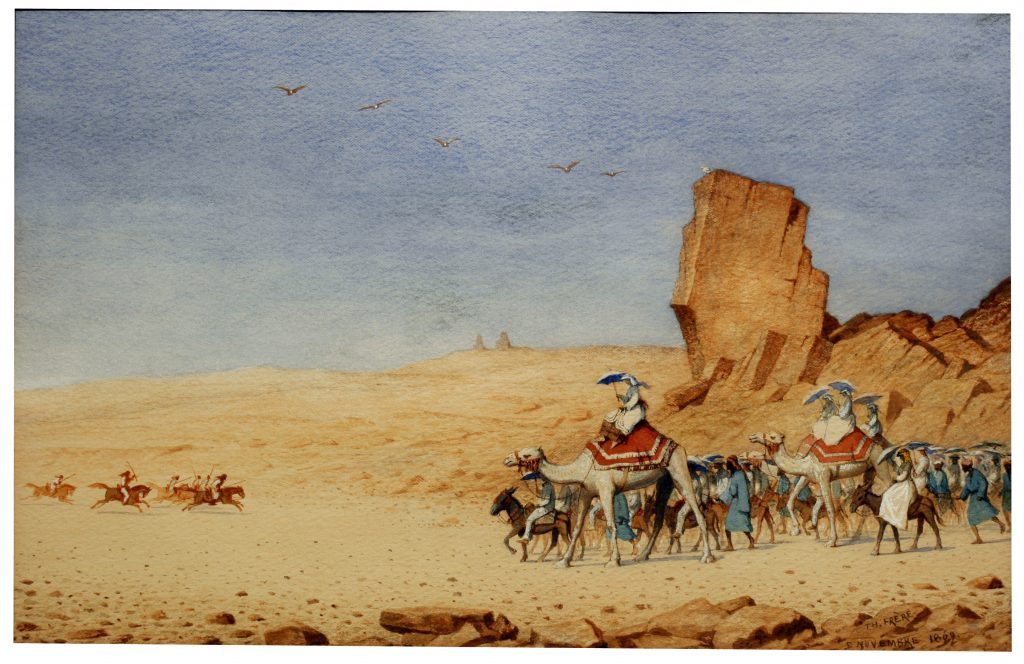
Théodore Frère, Promenade de l’Impératrice Eugénie en chameau dans le désert, 1869 © Souvenir de Ferdinand de Lesseps et du Canal de Suez / Lebas Photographie Paris
When you enter the first room of the exhibition “L’Epoque du Canal de Suez des pharaons au XXI ème siècle” at IMA, the red velvet curtain, the large screens with photographs commented by Frédéric Mitterrand’s inimitable voice, are a stark contrast to the Jean Nouvel building. Napoléon III’s era is at the heart of this illuminating show on one of the prowesses of the 19 th century. The piercing of the Egyptian canal by Ferdinand de Lesseps and its inauguration on November 17, 1869 shortly before the French Emperor/President was deposed. Many of his descendants attended the opening.
 François Gabriel Guillaume Lepaulle, Ferdinand de Lesseps, 1840, Bayonne Musée Bonat Helleu
François Gabriel Guillaume Lepaulle, Ferdinand de Lesseps, 1840, Bayonne Musée Bonat Helleu
Empress Eugénie wore a special amazon white cotton dress, shown here and lent by Musée de Compiègne and a few paintings depict her touring Egypt on a camel. The Emperor of Austria and many neighboring sultans surround Ismaïl Pacha. Napoléon III is unwell and could not attend. The event will be celebrated by Giuseppe Verdi who composes “Aïda” on a libretto by French archeologist Auguste Edouard Mariette. Unfortunately its premiere will be delayed until 1871 after the decors and Mariette are released from the Paris commune blockade. For the first time and thanks to the Suez canal, which unites the Mediterranean and the Red Sea, Europe is linked to Asia.

Hippolyte Arnoux and Zangaki frères, drague à couloir de 45 mètres, 1869 – 1885 © Archives nationales du monde du travail (Roubaix)
The first studies are made by Napoleon’s scientists in 1798 and vice roy Mehmet Ali, invites doctors, educators, army and marine personnel as well as archeologists to modernise Egypt. It is through Ferdinand de Lesseps, former consul in Alexandria and a friend of his son, Saïd Pacha, that the project will succeed. With the perseverance of Barthélemy Prosper Enfantin.
Egypt is still under the Ottoman domination and Great Britain is very hostile to the project fearing the loss of its Indian Empire. The new canal which goes from Port Saïd on the Mediterranean to Suez on the Red Sea, reduces the route from 12 300 miles (London Mumbai via Cape of Good Hope) to 7 200 miles. Enough industrials and bankers believe in the new technical progress of steamships and dredger boats, to enable the digging to start. Photographers and painters accompany Empress Eugénie on her big tour and this project becomes an adventure that everyone can follow back home. And the French invest heavily in the project.
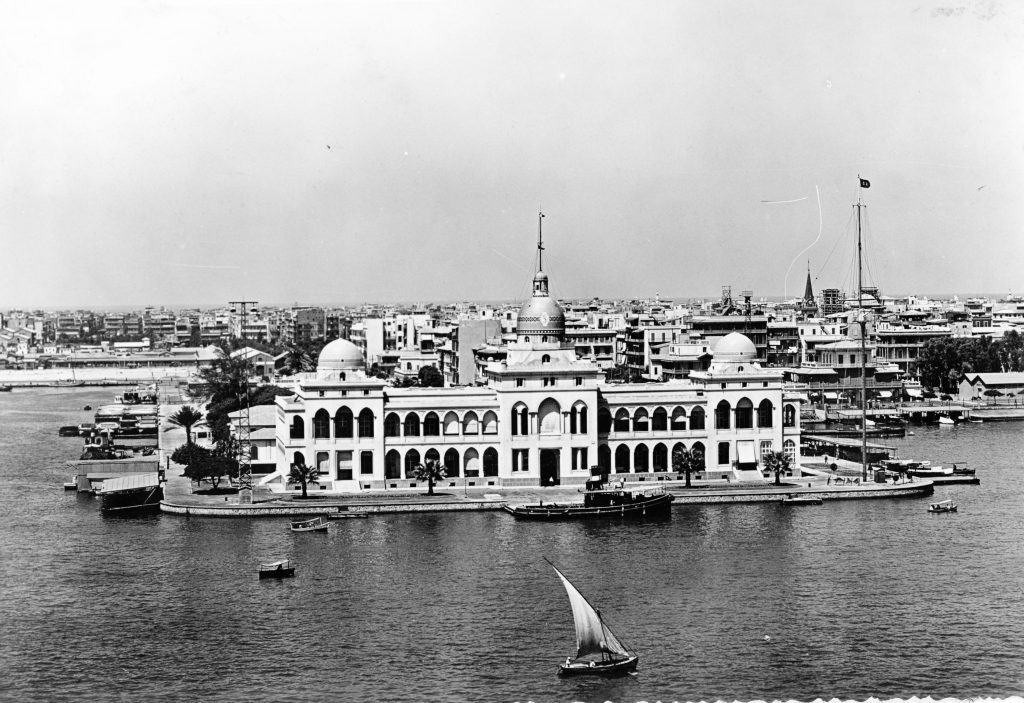
The offices of the Compagnie du Canal de Suez in Port Saïd, 1950 © Souvenir de Ferdinand de Lesseps et du Canal de Suez / Lebas Photographie Paris
The Pharaohs of ancient Egypt had already dreamt of creating a canal in 1878 bc, and Darius, emperor of Persia in 521 bc, also worked on the project which linked the Red Sea to Cairo. Then follows Venice in 1504. Ferdinand de Lesseps and new technology will be the key actors of the Suez Canal.
It took 10 years to complete and Egypt will own 44% of it, the 21 000 French stock owners, get the rest of the capital. Soon after, Egypt needs money and sells its shares to Great Britain who replace the Ottomans and take control of the canal in 1882. IN 1945 the King of Saudi Arabia meets President Roosevelt in Ismaïlia and sign the birth of Aramco. In July 1956, Nasser nationalises the canal to great acclaim by the Egyptians.
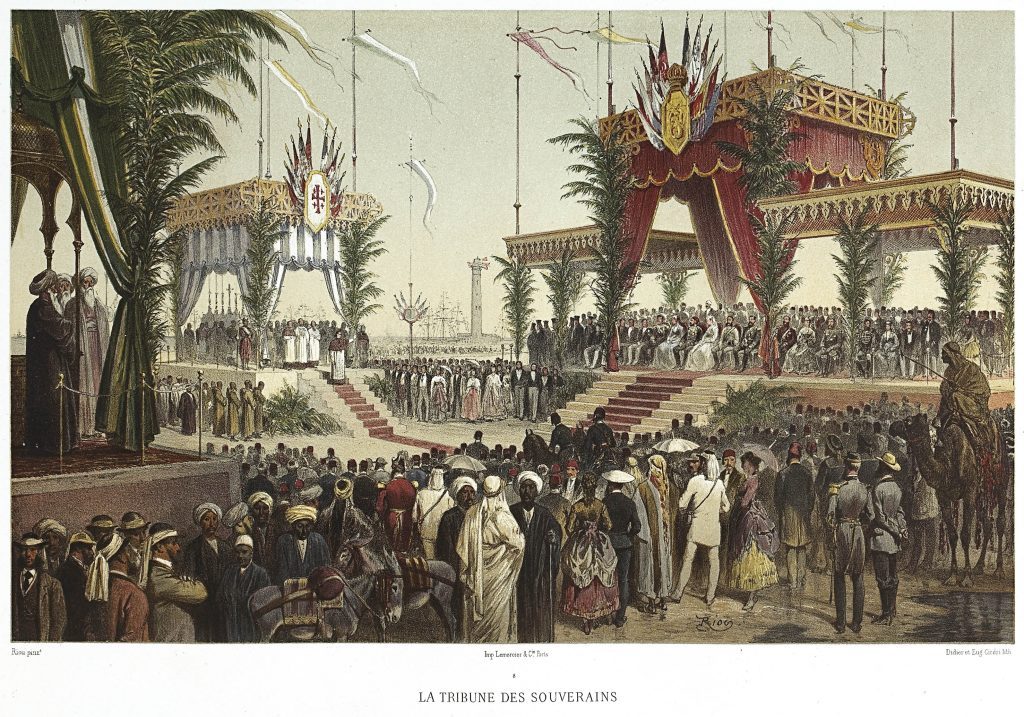
Edouard Riou, Eugène Cicéri, La Tribune des Souverains © Souvenir de Ferdinand de Lesseps et du Canal de Suez / Lebas Photographie Paris
This exhibition curated by former ambassador Gilles Gauthier and Claude Mollard, allies many qualities. It is beautiful aesthetically, fascinating historically and explains many Middle Eastern movements from sixty years ago. The last room includes modern photos of the 1932 architecture of the Suez company buildings in Port Saïd by Arnaud de Boistesselin.
For the 150 th anniversary of the canal this show will be at Cairo’s new museum of Civilizations. There is also a project of a museum to be built on the Canal in Ismailia, halfway through its length of 162 kms.
(Until August 5 at IMA, and at Musée d’histoire de Marseille from 19 October to March 31, 2019).
Share this Post
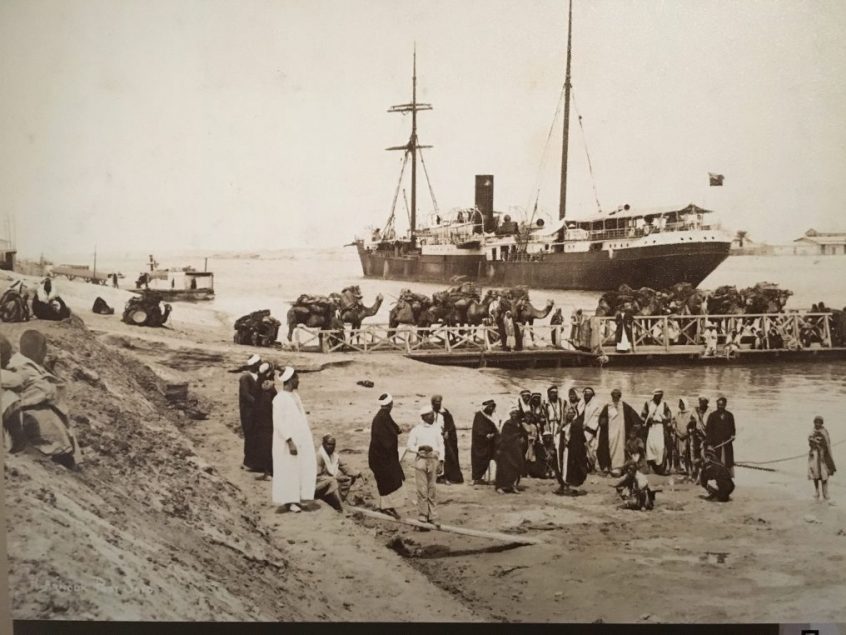
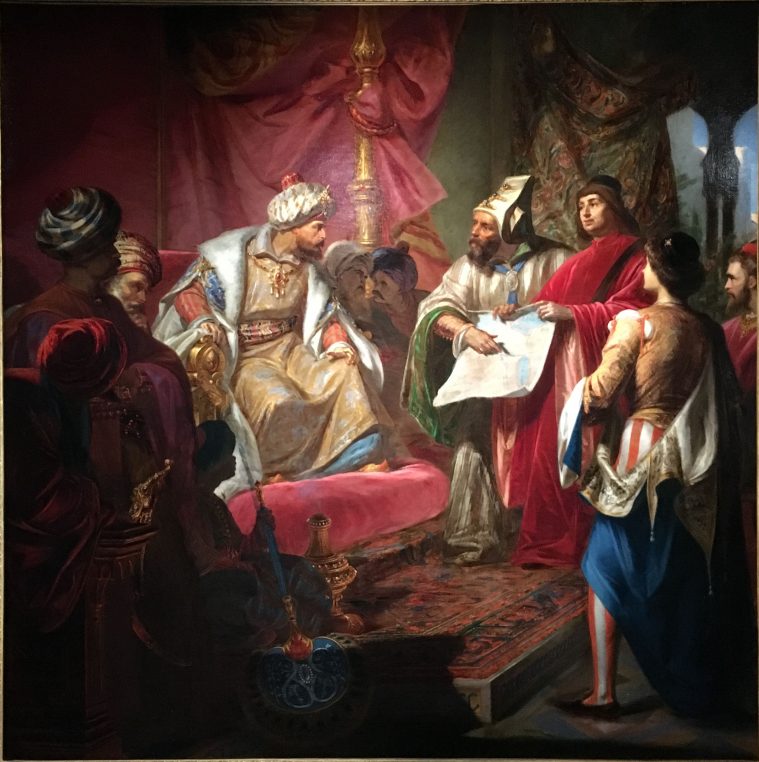

One Comment on “A very festive Suez Canal at Institut du Monde Arabe”
I MUST come to see this. My family was then so involved. I believe it was my great grandfathers idea to approach Verdi to write an opera for the inauguration. He was also involved in the building of the Cairo opera house modelled on the Scala in Milan.
He was a great friend of Mariette Pacha and am afraid that together they concocted this over the top story! I have a book entitled “Verdi’s Aida” which is my great grandfathers correspondence with the great man. The Khedive Ismaïl was enthralled by Empress Eugénie and spent billions just to impress her. Most of old Cairo was built to resemble Paris…. boulevards, bridges etc. That’s why old. Cairo was rather elegant.